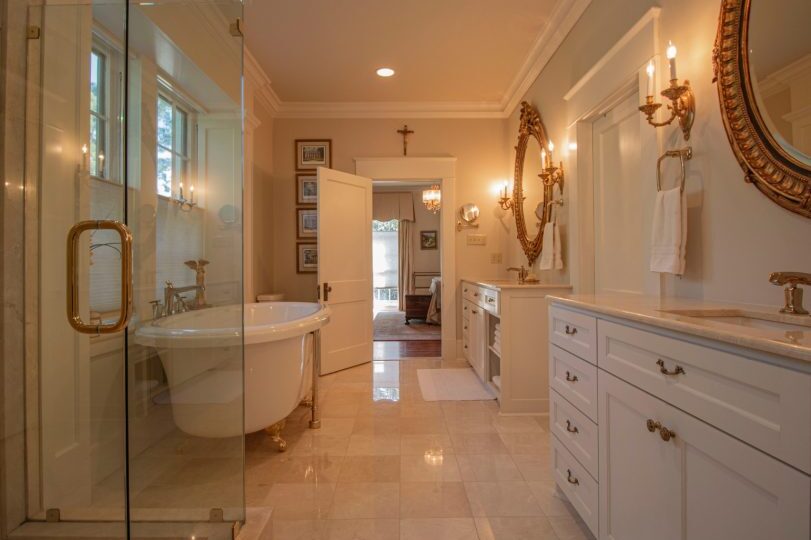Selecting a stone countertop is about more than picking a pattern or color you like—it’s about aligning the material’s qualities with your daily habits, household dynamic, and design preferences. With options like granite and quartz dominating modern kitchens and bathrooms, homeowners often find themselves choosing between style, strength, and practicality. The good news? You don’t have to compromise—if you choose based on lifestyle first, aesthetics second.
Let’s take a practical look at how different stone options hold up to the demands of everyday life, so you can make a choice that not only looks beautiful on installation day but also continues to work for you in the long run.
Understanding the Core Differences
At first glance, granite and quartz may appear similar, but they’re fundamentally different materials.
Granite is a natural stone, quarried directly from the earth and cut into slabs. Each piece is unique, with patterns and veining shaped by nature. Quartz, on the other hand, is engineered—made from crushed quartz particles bonded with resins and pigments. This controlled process creates a highly uniform product available in a wide range of colors and finishes.
Both materials are durable and attractive, but their differences make them better suited to different lifestyles.
For the Busy, No-Time-to-Wipe-Down Household
If your kitchen sees high traffic—kids grabbing snacks, pets underfoot, a constant stream of cooking—then quartz countertops may be the more forgiving choice. Their non-porous surface resists staining from juice, oil, or wine, and doesn’t require sealing. A quick wipe with soap and water is usually enough to restore cleanliness.
Granite is tough but more porous. It must be sealed regularly to maintain stain resistance. While this isn’t a complex task, it’s another step in home maintenance that not everyone wants to add to their list. If spills are frequent and clean-up isn’t always immediate, quartz wins for ease of upkeep.
For the Serious Home Chef
If you’re someone who chops, dices, sautés, and sears on a regular basis, countertop durability matters. Granite is highly heat resistant and can withstand a hot pan directly from the stove—though it’s still wise to use trivets. It’s also highly scratch resistant, making it a reliable work surface for a busy cook.
Quartz is durable but more sensitive to heat. High temperatures can damage the resin that binds the material, so heat pads and cutting boards are a must. While it holds up well to day-to-day use, it’s not as tolerant of high-impact or thermal shock as granite.
If You Value Low Maintenance Over Natural Variation
Some homeowners appreciate the subtle imperfections and irregular veining found in granite—it tells a story and brings a touch of nature into the space. But for others, that unpredictability can make coordinating cabinetry and backsplashes more challenging.
Quartz offers consistency. If you’ve chosen a modern or minimalist design where uniformity is key, quartz provides that control. It can mimic the look of marble or concrete or stand on its own with solid tones. This reliability in appearance makes it easier to plan cohesive designs with your cabinetry, flooring, and lighting.
Aesthetics That Match Your Design Vision
Do you lean toward contemporary, transitional, or classic design? The visual impact of your countertops should support the overall vibe of the room.
Granite works well in traditional or rustic settings, adding warmth with its organic character. Bold veining or rich earth tones lend themselves to kitchens and baths with a timeless or earthy look.
Quartz, by contrast, is ideal for clean, modern aesthetics. It’s available in whites, grays, taupes, and blacks with subtle or no patterning, allowing it to act as a sleek backdrop to bold cabinets or statement lighting.
Families, Entertainers, and Everyone In Between
If your kitchen doubles as a social hub, think about how your countertops contribute to that experience. An expansive island covered in quartz offers plenty of seating space and is easy to clean between guests. It’s perfect for homeowners who host regularly but don’t want to worry about wine spills or fingerprints.
For families that live at full volume—meal prep while helping with homework, the dog barking, music playing—granite’s strength and endurance offer a feeling of reliability. It handles wear and tear without showing its age.
In both cases, pairing the right cabinet installation with your stone selection makes a big difference. Optimized drawer placement and vertical storage paired with the right countertop shape and finish ensure the space flows naturally for your family or guests.
BNJ Granite & Cabinets Tip: Start With How You Live
Before choosing based on color or price, think first about how your space functions on an average day. That’s the lens that leads to lasting satisfaction. Matching a material’s features to your real-world needs often proves more important than chasing trends.
Whether you’re outfitting a family kitchen or upgrading a powder room, the surfaces you choose should feel like a natural extension of your lifestyle. This is why local professionals at BNJ Granite & Cabinets are an asset—they understand not just the materials, but also how to tailor them to the rhythms of everyday living.
Budget and Long-Term Value
While quartz typically comes with a higher upfront cost than many granite varieties, it can pay off over time through reduced maintenance needs. Granite may be less expensive initially, depending on the grade and origin of the stone, but you’ll need to factor in periodic sealing.
If you’re investing in countertops as part of a larger remodel, also consider the visual and resale appeal. Both quartz and granite are valued in real estate listings, but preferences can vary by region. Uniform quartz may appeal to modern buyers, while a striking granite island can impress those looking for character.
Environmental Factors
If sustainability matters in your home improvement decisions, you’ll want to consider where and how your stone is sourced. Granite is a natural resource that requires quarrying and transport. Some homeowners choose locally quarried granite to reduce their environmental footprint.
Quartz is engineered, and while some manufacturers incorporate recycled materials and greener production practices, others do not. If environmental impact is a concern, it’s worth asking suppliers about their sourcing and manufacturing policies.
Final Thought
Choosing a stone countertop isn’t a one-size-fits-all decision. It’s personal. It’s about how you use your home, what you expect from your materials, and what aesthetic inspires you every time you enter the room.
Whether you gravitate toward the organic strength of granite countertops or the low-maintenance consistency of quartz countertops, align your choice with how you live—not just how you want your space to look. In doing so, you’ll not only get a countertop that stands up to life—you’ll get one that enhances it.








